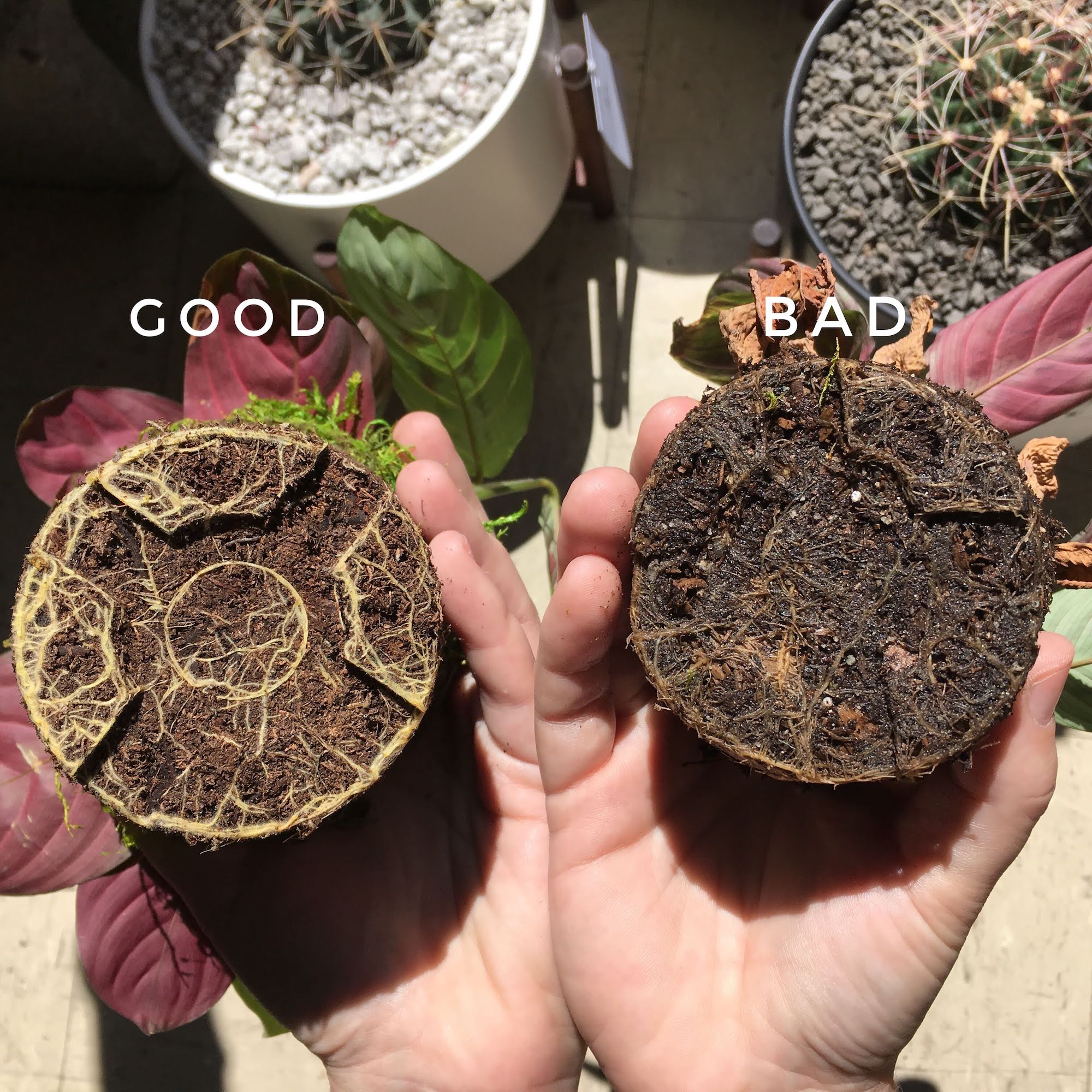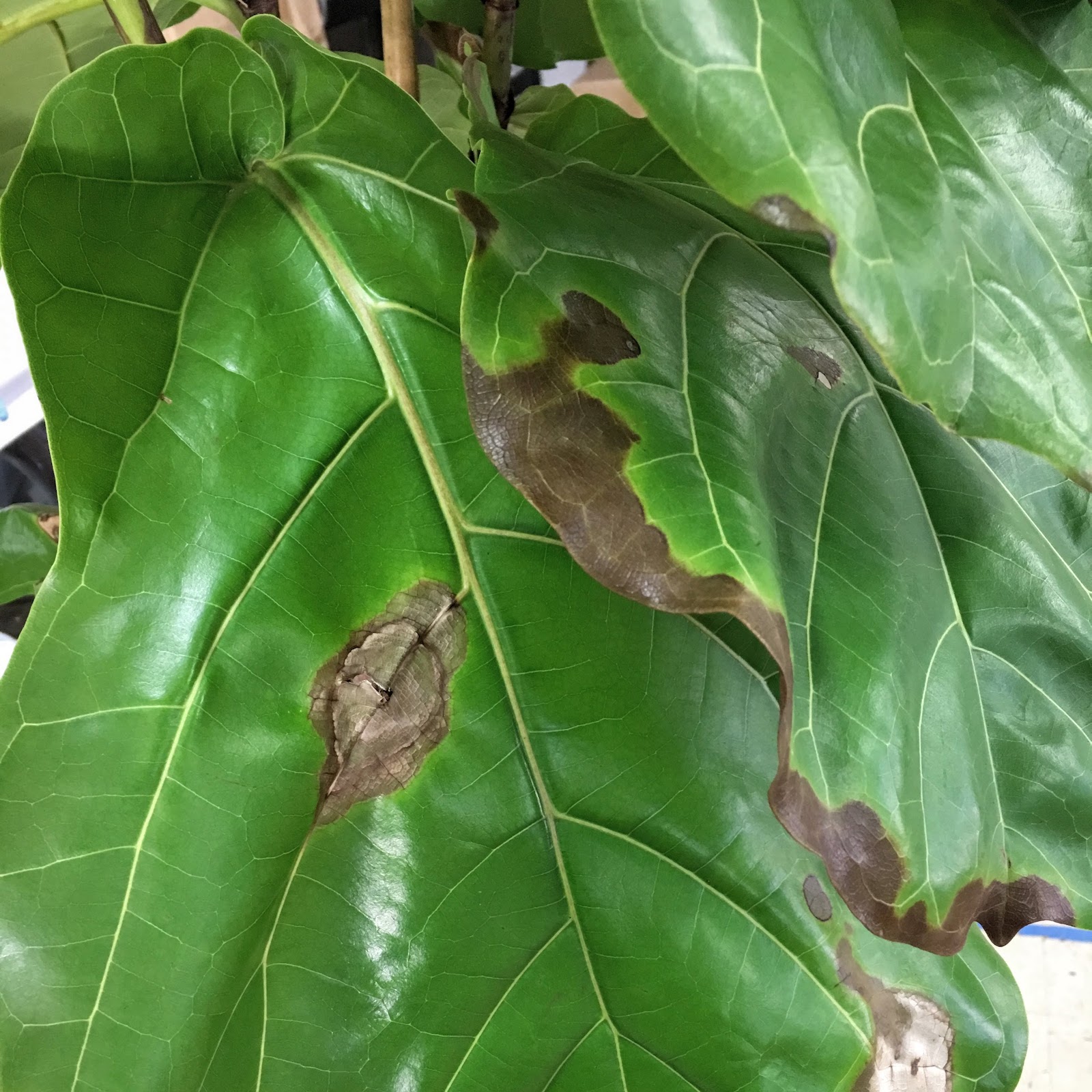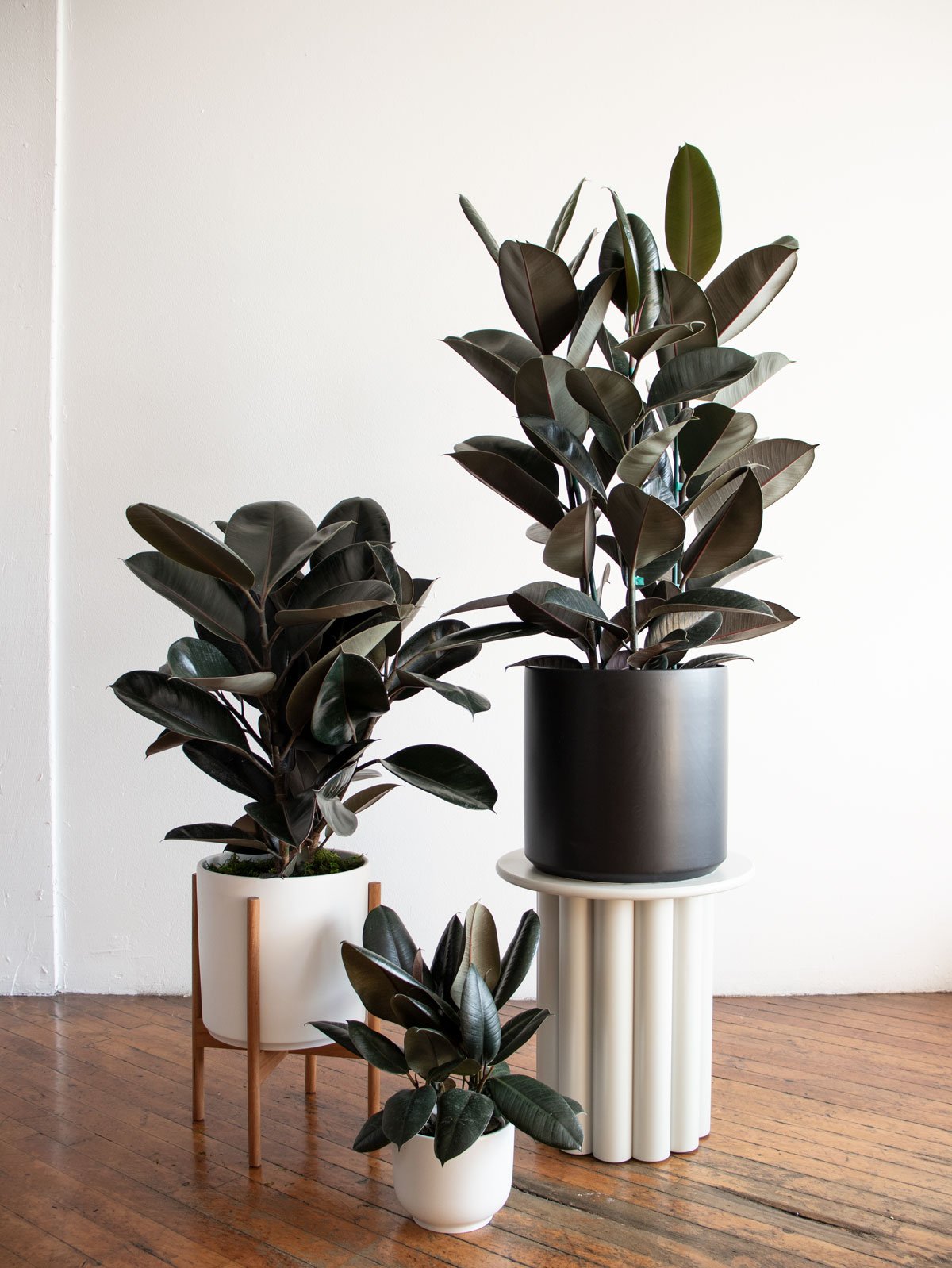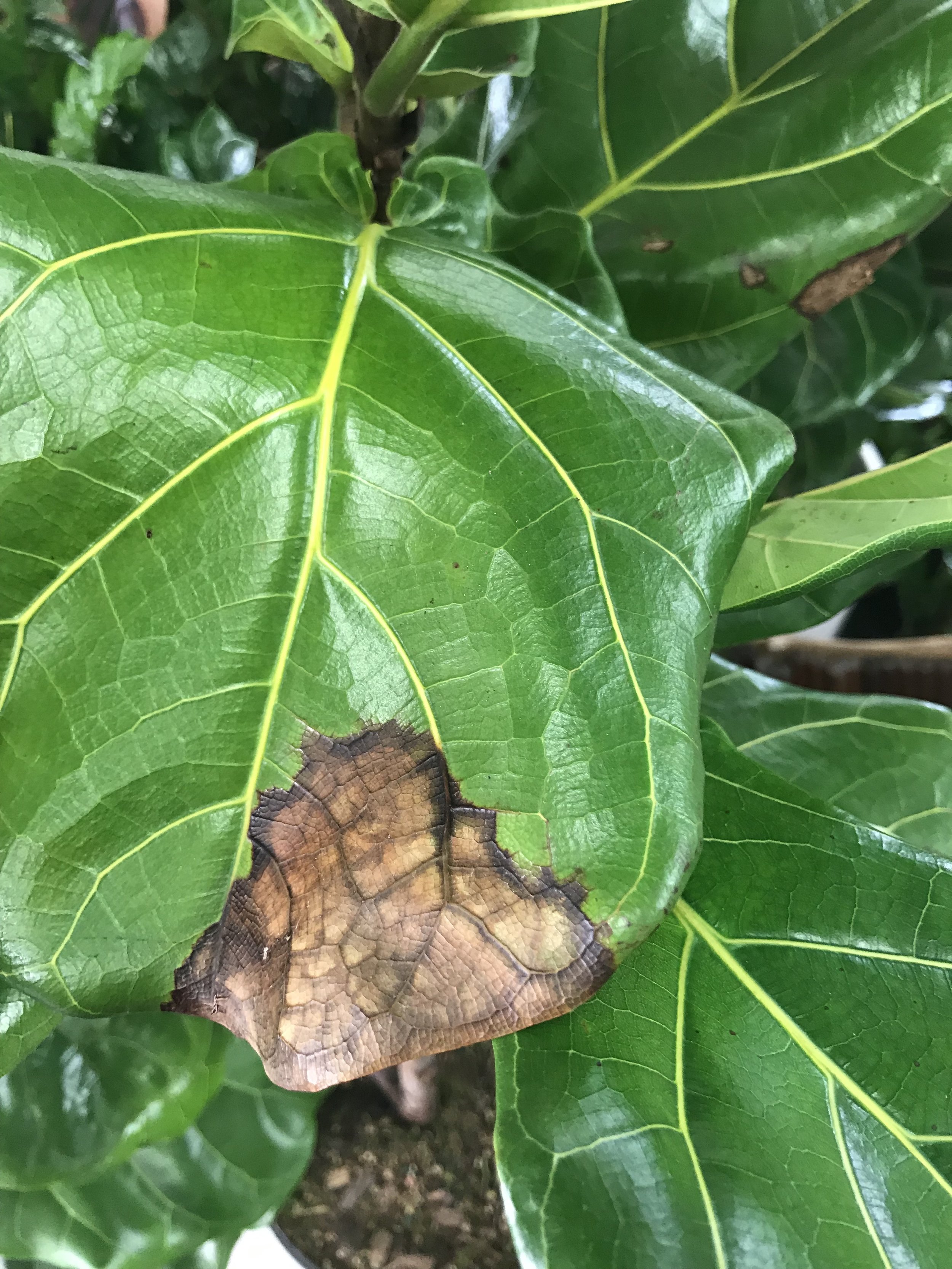Here's the truth - most houseplants die from being overwatered. Overwatering can also lead to yellow leaves, leaf drop, or root rot, among other symptoms. While finding the right light + water + temperature balance for each plant takes a bit of patience and trial and error, there are a few things you can do as precaution, and remember that an underwatered plant is much easier to fix than an overwatered one.
Check your plant’s soil has dried out
The best way to make sure you don’t overdo it on the watering is to let your plant's soil dry out between waterings. Before watering feel 2 inches deep into the soil with your fingers, or use a wooden bamboo stick to test moisture levels at the bottom of the pot (like when baking, the chopstick will come out completely dry if the plant is ready for more water!). With most plants, if you feel or notice moisture, hold off on watering.
Use a moisture meter
If you want a more accurate idea of the moisture levels in your plant’s soil, try using a moisture meter. This a simple gadget that can provide the most accurate readings of whether or not it's time to water your plant. Read our full guide on how to use your moisture meter for best results.
Ensure there’s proper drainage
Make sure that your plant’s nursery pot or decorative container has a drainage hole. This will protect the roots from sitting in stagnant water. Balance style & function by elevating your plants with 1" of Styrofoam within their decorative pot, this will absorb any excess water that drips from their nursery container.
Have any doubts about your watering schedule? Email us a photo at plantdoctor@leonandgeorge.com and we can help you find the right balance.
INDOOR PLANTS, POTTED & DELIVERED
Premium plants paired with handcrafted ceramics, plus lifetime Plant Doctor support. Order online at leonandgeorge.com













